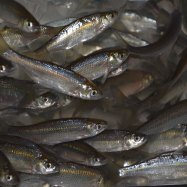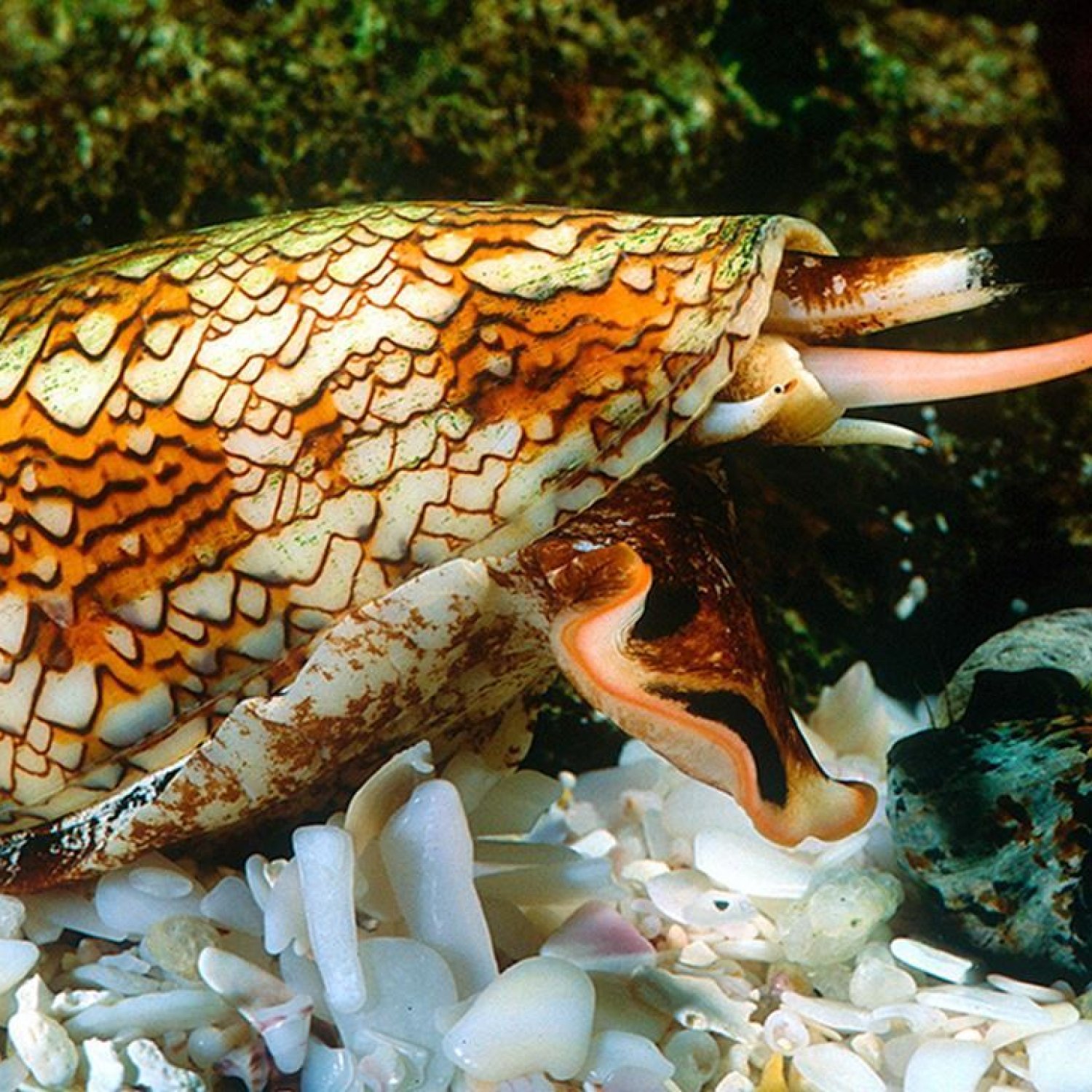
Cone Snail
Varies by species; typically between 2-10 cm
The cone snail, a small but deadly creature found in coastal areas and coral reefs, may vary in length and typically measures between 2 to 10 cm. Belonging to the Conidae family, this snail's body is shaped like a tapered cone shell. Beware of its venomous sting! #ConeSnail #DeadlyCreature #CoastalLife.
Animal Details Summary:
Common Name: Cone Snail
Kingdom: Animalia
Habitat: Marine
Cone Snails: The Deadly Beauties of the Ocean
Deep within the vast and mysterious ocean, there lies a creature with a shell so mesmerizing, you can’t take your eyes off it. Its body is decorated with vibrant colors and intricate patterns, giving the impression of a stunning piece of art. However, don't let its beauty deceive you, for this is the cone snail, a predator with a lethal weapon – a venom so potent that it can take down even the most powerful of creatures.Scientifically known as Conus, cone snails are a group of marine mollusks that are found in tropical and subtropical regions all over the world Cone Snail. These charming creatures may look tranquil in their shell, but they are skilled and ferocious predators, utilizing their venom to hunt and defend themselves in the vastness of the ocean.
In this article, we will dive into the fascinating world of cone snails, exploring their physical characteristics, hunting methods, and their reputation as some of the deadliest creatures in the ocean.
The Anatomy and Classification of Cone Snails
Cone snails belong to the Kingdom Animalia, Phylum Mollusca, and Class Gastropoda. They are a part of the Neogastropoda order, which includes other predatory species such as whelks and mud snails. However, cone snails stand out with their unique family – Conidae, which consists of over 800 species of cone snails.These incredible creatures have a distinctive tapered cone-shaped shell, which gives them their common name – cone snail. The shell can come in a variety of sizes, with some species reaching up to 10 cm in length, while others are as small as 2 cm. Moreover, their shells are adorned with an array of colors and patterns, making them visually striking creatures.
The body of a cone snail consists of a head, a foot, and a mantle Chilesaurus. The head contains the eyes, mouth, and sensory organs that help the snail detect its surroundings. The foot, on the other hand, is used for locomotion, allowing the snail to glide effortlessly across the ocean floor. Lastly, the mantle is responsible for secreting the shell, providing the snail with protection and a home.
Eating Habits of Cone Snails
As predators, cone snails possess a unique and ingenious feeding method. Using their long proboscis, a muscular and retractable tube, they can shoot out a harpoon-like tooth that is coated with venom. This venom is a potent cocktail of chemicals that helps them capture and immobilize their prey.Cone snails are known to be opportunistic feeders, meaning they will hunt and eat anything that crosses their path. Some species, such as the geographic cone snail, are particularly fond of fish and can even take down larger prey like small sharks.
Once the prey has been struck with the venom, it becomes paralyzed, allowing the snail to consume it at its own leisure. Interestingly, cone snails have been observed to use a form of "sting-and-run" tactic, where they quickly retreat after striking their prey, only to come back and consume it once it has been immobilized.
Habitat and Distribution
Cone snails are found in various marine habitats, including shallow coastal areas and deeper reefs. They are most commonly found in tropical and subtropical regions, where the water is warm and diverse in potential prey.Their geographical distribution is widespread, with different species of cone snails inhabiting different parts of the world. Some of the most well-known species include the geography cone, which can be found in the Indo-Pacific region, and the textile cone, which can be found in the eastern Pacific.
Country of origin is also varied among different species of cone snails. For example, the geography cone is most commonly found in the Philippines, while the textile cone is native to the Gulf of Mexico.
The Deadly Reputation of Cone Snails
While cone snails may be visually stunning and fascinating creatures, they are also considered to be one of the most dangerous animals in the ocean. This is due to their potent venom, which contains a complex mixture of toxins that can cause severe harm to humans.The venom of cone snails is primarily used for hunting, but it can also be used for self-defense. If a cone snail feels threatened, it can release its venom through its proboscis, which can cause paralysis, respiratory failure, and even death in humans.
It is estimated that approximately 30 human deaths have been attributed to cone snail envenomation. However, with advancements in medical research, some of the toxins found in cone snail venom have been extracted and used to develop medicinal drugs. These drugs have been effective in treating chronic pain, epilepsy, and other nervous system disorders.
The Importance of NLP in Studying Cone Snails
Natural Language Processing (NLP) has played a crucial role in studying cone snails and their venom. As a field of artificial intelligence, NLP has allowed scientists to analyze large amounts of data related to the biochemical makeup of cone snail venom and its potential medical applications.Through NLP, researchers have been able to identify and extract specific peptides from cone snail venom that have medicinal properties. These peptides have been found to target and block certain pain receptors in the body, making them potential alternatives to traditional painkillers.
Furthermore, NLP has also been utilized in monitoring and tracking cone snail populations, especially in areas where illegal harvesting for the exotic pet trade is prevalent. By analyzing online forums and social media posts, researchers have been able to identify and track the trafficking of these animals.
In Conclusion
A single cone snail may seem like a small and harmless creature, but its venomous capabilities make it a formidable predator. Its stunning appearance and unique hunting methods make it an intriguing and mysterious creature of the ocean.Through NLP and continued research, scientists are discovering more about the biochemical makeup of cone snail venom and its potential medical applications. And while cone snails may pose a threat to humans, they play an essential role in maintaining the balance of marine ecosystems.
So, next time you come across a beautiful cone snail in the ocean, admire its beauty from a safe distance and remember to respect its deadly reputation.

Cone Snail
Animal Details Cone Snail - Scientific Name: Conus
- Category: Animals C
- Scientific Name: Conus
- Common Name: Cone Snail
- Kingdom: Animalia
- Phylum: Mollusca
- Class: Gastropoda
- Order: Neogastropoda
- Family: Conidae
- Habitat: Marine
- Feeding Method: Predatory
- Geographical Distribution: Tropical and subtropical regions
- Country of Origin: Varies
- Location: Coastal areas, coral reefs
- Animal Coloration: Variable; often vibrant and patterned
- Body Shape: Tapered cone-shaped shell
- Length: Varies by species; typically between 2-10 cm
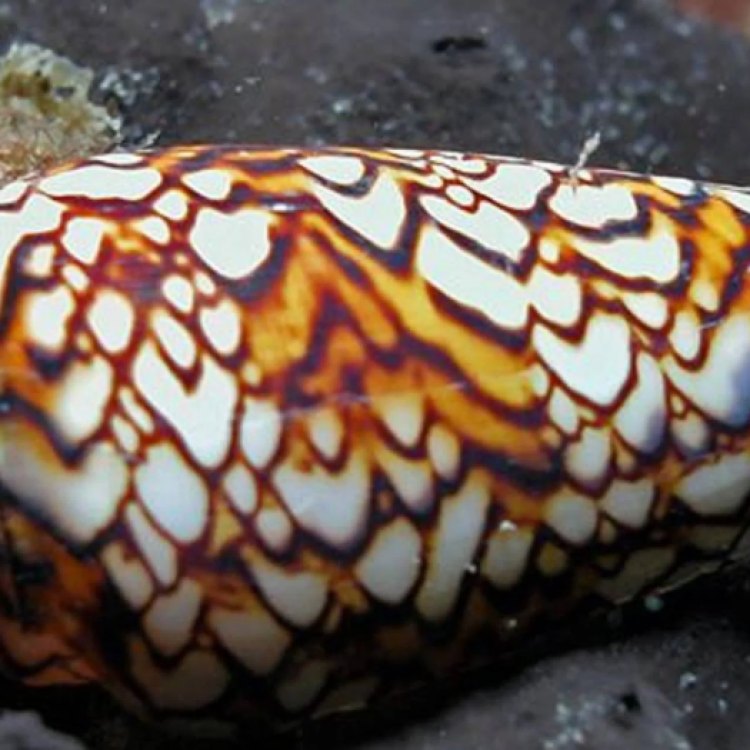
Cone Snail
- Adult Size: Varies by species; typically between 2-10 cm
- Average Lifespan: Varies by species; typically 5-10 years
- Reproduction: Sexual
- Reproductive Behavior: Internal fertilization
- Sound or Call: None
- Migration Pattern: None
- Social Groups: Solitary
- Behavior: Active hunters, use venomous harpoon-like radula to immobilize prey
- Threats: Habitat loss, pollution, overcollecting for shells
- Conservation Status: Varies by species; some are endangered
- Impact on Ecosystem: Important role in coral reef ecosystems
- Human Use: Collected for their shells, some species used for medical research
- Distinctive Features: Distinctive cone-shaped shells, venomous radula
- Interesting Facts: Cone snails produce a neurotoxic venom used to capture and immobilize their prey
- Predator: Few predators; some species are preyed upon by certain fish and sea anemones
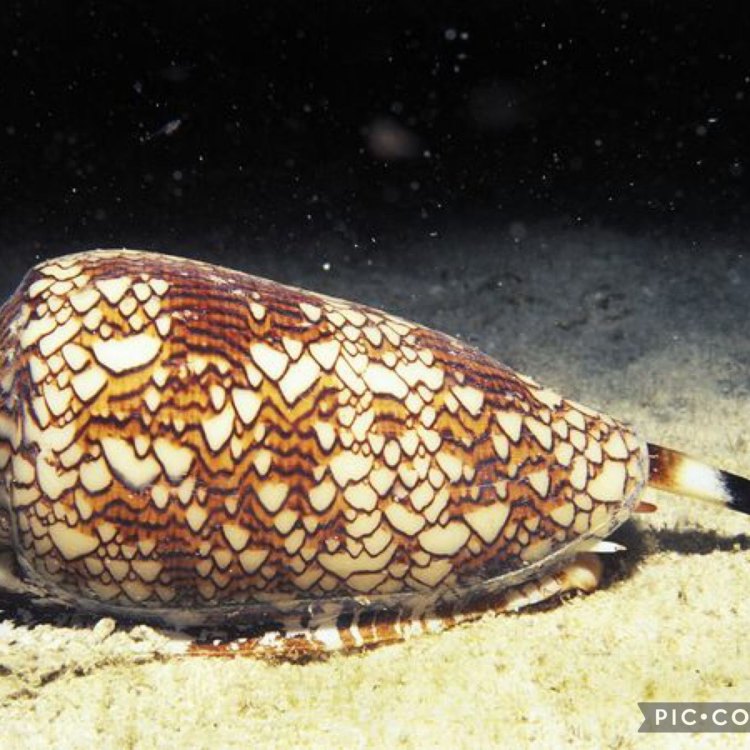
Conus
The Intriguing World of Cone Snails: Nature's Deadly Hunters
Deep in the ocean, hidden among the colorful coral reefs, lies a creature that may seem harmless at first glance. With its inviting cone-shaped shell and slow movements, one might even be tempted to pick it up and admire its beauty. However, underestimating this creature would be a grave mistake, as the cone snail is one of the most lethal hunters in the ocean.The cone snail, also known as conus, is a group of sea snails that belong to the family Conidae PeaceOfAnimals.Com. They can be found in various tropical and subtropical oceans, with the highest species diversity in the Indo-Pacific region. Their size may vary, with some species reaching up to 10 cm in length, but one thing that remains consistent is their deadly venom.
Reaching a lifespan of 5 to 10 years, these solitary creatures spend their days actively hunting for prey. Their preferred prey includes small fish, worms, and other snails, which they capture using their venomous radula – a harpoon-like structure that can be extended from their proboscis. The cone snail's venom is actually a potent toxin that paralyzes the victim, allowing the snail to slowly engulf and consume its prey.
But how does this tiny creature produce such a deadly neurotoxin? The answer lies in the unique anatomy of the cone snail. Unlike most snails, the cone snail's venom is produced in a specialized gland called the venom duct. Within the gland, venom producing cells known as specialized epithelial cells create and store the venom. When the snail is ready to hunt, it will extend its radula and inject the venom into its prey, leaving them paralyzed and defenseless Chimpanzee.
This venom is made up of a mixture of different neurotoxins, each with its own specific function. Some toxins act on the nervous system, while others target the muscular system, creating a potent cocktail that can quickly immobilize and kill even the most resilient prey. The cone snail's venom is so effective that it has been shown to be 100 times more powerful than morphine, making it a promising area of study for medical researchers.
Interestingly, cone snails do not produce their venom with malicious intent. As solitary creatures, they only use their venom for hunting and self-defense when threatened. Unfortunately, this defense mechanism has led to severe consequences for humans. When handled or stepped on, cone snails can release their venom through their harpoon-like radula, causing severe pain, paralysis, and, in some cases, even death.
Despite their potent venom, cone snails have very few predators. Some species are preyed upon by certain fish and sea anemones, but their most significant threat comes from humans. The demand for their beautifully patterned shells has led to overcollecting, and their habitats are rapidly declining due to pollution and habitat loss. As a result, several species of cone snails are now listed as endangered, emphasizing the importance of conservation efforts to protect these fascinating creatures.
But cone snails are not just a threat to humans; they also play an essential role in their ecosystem. As active hunters, they help control the population of their prey, preventing overpopulation and allowing other species to thrive. Their shells also provide a home for small organisms and help to create a diverse and balanced ecosystem.
The cone snail's unique features and deadly abilities have captivated the interest of researchers and scientists for years. With over 800 species, each with its own specific venom, there is much to be learned from these fascinating creatures. Through studying their venom and its effects, scientists hope to gain valuable insights into developing new painkillers and treatments for neurological disorders.
Aside from their scientific significance, cone snails also hold cultural importance in some regions. In the Philippines, the "glory of the sea," also known as the textile cone, is a symbol of wealth and status. In some parts of the South Pacific, the shells are used as currency and traded among islands.
In conclusion, the cone snail is a creature worth marveling over. From its unique anatomy and hunting techniques to its potent venom and cultural significance, there is so much to learn and appreciate about these tiny yet deadly hunters. As we continue to understand and protect these creatures, may we also remember to handle them with caution and respect their place in our fragile ocean ecosystems.
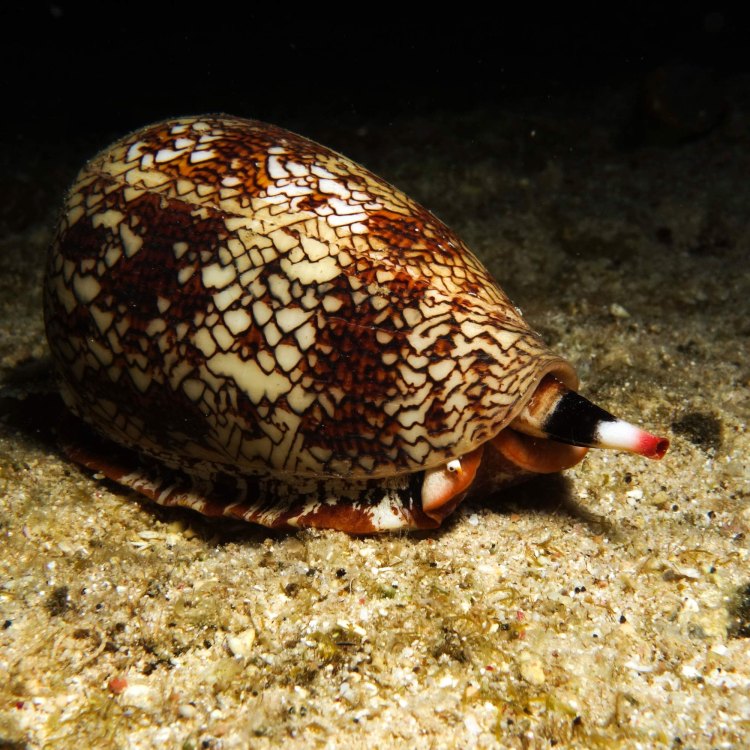
Cone Snails: The Deadly Beauties of the Ocean
Disclaimer: The content provided is for informational purposes only. We cannot guarantee the accuracy of the information on this page 100%. All information provided here may change without prior notice.




